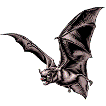Museum, University of Nebraska State

University of Nebraska State Museum: Mammalogy Papers
Document Type
Article
Date of this Version
12-14-1979
Citation
Occasional papers of the Museum of Texas Tech University (December 14, 1979) number 62: 1-16.
Abstract
Faunal checklists provide useful ready references for many kinds of endeavors, both in the laboratory and in the field, and are particularly helpful to students. Since publication more than four years ago of a "Revised checklist of North American mammals north of Mexico" (Jones et al., 1975), demand for that list has exceeded the supply set aside for general distribution; additionally, systematic studies of mammals published since 1974 necessitate changes in the list. Primarily for these reasons, a newly revised checklist of mammalian species occurring in the Nearctic to the north of Mexico is here presented. As in this and similar earlier compilations, a single vernacular name applies to all populations of a species. There is, however, no formal system of vernacular nomenclature for mammals. Rather, such names gain acceptance through usage, and this list attempts to reflect those currently in use.
In this version of the checklist, we have tried to include all species of Recent mammals in North America (and adjacent waters ) north of Mexico as recognized in the published literature up to October 1979. Among terrestrial taxa, several scientific names differ from those used in previous lists and some species have been added or deleted; also, a few vernacular epithets have been altered, principally on the basis of suggestions made by colleagues. The one group in which a significant number of changes appear is the whales, wherein two orders are recognized (rather than the single order Cetacea), and certain other additions and corrections have been made on the basis of Rice's (1977) list of marine mammals of the world and subsequent relevant publications as called to our attention by Rice (personal correspondence, March 27, 1979). We are indeed grateful for his assistance. Aside from the cetaceans, new specific names have been added as a result of the following studies: Patton et al . (1976) have shown that northern populations of kangaroo rats previously assigned to Dipodomys heermanni actually represent a distinct species, D. califomicus, and, similarly, Callahan (1977) demonstrated that Eutamias obscurus is distinct at the specific level from E. merriami; Diersing and Hoffmeister (1977) described a new species of shrew, Sorex arizonae, from southern Arizona, and Hennings and Hoffmann (1977) concluded that Sorex monticolus is the correct name for the species previously known as S. obscurus; Mascarello (1978) found populations of woodrats on either side of the Colorado River, all formerly referred to a single species (Neotoma lepida), to represent two species and elevated N. devia to specific rank for rats occurring to the east of the river in Arizona; Spitzer and Lazell (1978) named a new rice rat, Oryzomys argentatus, from the Florida Keys, and Benson and Gehlbach (1979) apparently demonstrated that Oryzomys couesi is a species distinct from O. palustris in South Texas (the former was considered a separate species for many years but had been regarded as conspecific with palustris for the past two decades); and, lastly, the discoveries by Hinesley (1979) that a long-recognized subspecies of Onychomys torridus actually represents a separate species (O . arenicola), and by Thaeler and Hinesley (1979) that Thomomys clusius is specifically distinct from T . talpoides. Additionally, two changes involving major groups should be mentioned: the Pinnipedia are no longer regarded as an order distinct from Carnivora (Tedford, 1976), and the walrus is again recognized as belonging to a separate family, Odobenidae (Repenning and Tedford, 1977).
As for species included in the 1975 list that do not appear here, the following references are of note: Rausch and Rausch (1975) reduced Lemmus nigripes to subspecific status under L. lemmus, a specific name they provisionally applied to North American brown lemmings; only a single species of Microsorex is admitted on the basis of van Zyll de long's (1976a) study; whereas Williams (1978) regarded Perognathus apache as a synonym of P. flavescens, and Hoffmeister and Diersing (1978) listed Sciurus kaibabensis as a subspecies of S. aberti.
Results of several recent studies suggest possible future changes in the list of recognized species. The most controversial of these is the claim by Nadler et al., (1977) that the widely used generic name Eutamias actually should be regarded only as a subgenus of Tamias. Ellis and Maxon (1979), however, took the opposite point of view, arguing that Tamias and Eutamias should be retained as distinctive genera inasmuch as the two lines have been separate since late Miocene times and taking into account morphological, karyotypic, and immunological data. In another case, there is an accumulation of evidence (Nadler et al., 1971). Robinson and Hoffmann, 1975, and others) that Spermophilus richardsoni is distinct at the specific level from several subspecies now associated with that species (which, if true, would elevate S. elegans to specific rank). Similarly, there are increasing data that Sorex cinereus actually may represent a superspecies consisting of two or more recognizable taxa at the specific level (see especially van Zyll de long, 1976b). The same author (van Zyll de long, 1979) has suggested that the subspecies septentrionalis is separable as a species from Myotis keenii. And finally, Van Gelder (1978) has summarized evidence for regarding all North American canids as members of the single genus Canis.
Various species of mammals not native to North America have been introduced onto the continent over the years. We have, in this compilation, listed nine such species (identified by an asterisk) that currently occur in the wild state in numbers sufficient to justify their inclusion. Other species, such as the blackbuck (Antilope cervicapra), axis deer (Cercus axis), sika deer (Cercus nippon), ibex (Capra ibex), and oryx (Oryx gazella), now occur outside confinement, and some of these likely will be included by necessity in subsequent checklists.


Comments
Copyright 1979, Texas Tech University. Used by permission.